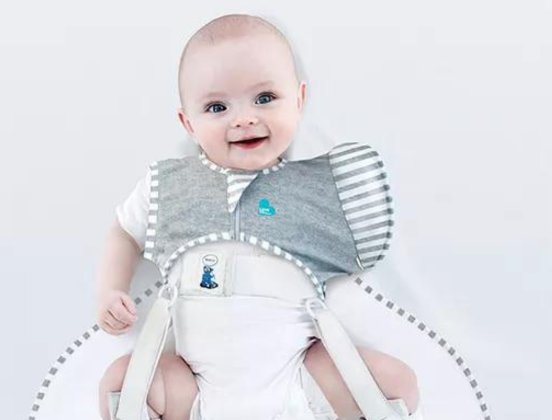Why do babies cry?
Babies cry for several different reasons and some cry more than others. Crying is your child’s way of telling you that they need something. Sometimes it’s easy to know that they want a cuddle or feeding. At other times, it might prove challenging. Babies cry a lot during the first three months. On average, they will cry and fuss for up to two hours per day. Crying usually peaks between four and eight weeks old.
Let’s break down some of the most common reasons why your baby is crying.
Common reasons why babies cry:
- Hunger
- Needing a nappy change
- Wind
- Tiredness
- Boredom
- Discomfort
- Wanting attention
- Being too hot or too cold
- Overstimulation
- Pain
What are the different types of baby cries?
Over time, you will begin to recognise your child’s cries and understand what it is that they require. Dunstan Baby Language was famously created by Australian opera singer Priscilla Dunstan who observed that babies make certain noises before crying to indicate what they need.
It’s important to note that Dunstan is not an expert in the field and the accuracy of her theory is still under review. However, her findings are intriguing and might help parents and caregivers to understand what their child needs.
Below, find out what some of the most common baby sounds mean according to Dunstan Baby Language:
- “Neh” - Hunger
- “Eh” - Upper wind (burp)
- “Eairh” - Lower wind (gas)
- “Heh” - Discomfort
- “Owh” - Tiredness
Why is my baby crying?
It’s not always easy to know why your child is crying. Below, discover a checklist that you can work through to find out why your child might be crying.
Is my baby hungry?
Think about where your child is in their sleep-feed-uptime rhythm. Try bottle or breastfeeding your baby to see if this helps them to settle.
Is my baby cold or too warm?
You can check to see if your child is too hot or too cold by feeling their back or tummy - this should feel warm. Red Nose Australia doesn’t recommend a specific room temperature for your baby. Instead, it’s important to follow the below steps:
- Always dress your baby according to the room temperature, you can use our TOG rating guide to find the right sleep garment.
- Always ensure there are no toys, pillows, or blankets where the baby is sleeping.
- Babies control their temperature through the face and head. Make sure to put your baby to sleep on their back with the face always uncovered.
Does my baby need burping?
Your baby might be crying because of wind. To burp your child safely, hold them upright and gently pat their back.
Does my child want attention?
Babies also cry to signal their emotional needs. Cradling your child or gently rocking them might just be what they need to settle.
Does my baby need changing?
Your child might be crying because they need their nappy changing. Always put your baby to sleep with a clean, dry nappy and treat any nappy rashes to ensure they have a good night’s rest.
Is my baby teething?
On average, babies will start teething as early as four months old and the pain might be a cause of their crying. A pacifier or even your clean thumb/finger can help to soothe your little one. If your baby is over the age of six months, try giving them soft fruit or vegetables to chew on.
Does my baby have stomach issues?
If your baby is also wriggling and arching their back, they might have gas. Bicycling their legs and gently pushing them up to the chest will help relieve any gas.
Is my baby overtired?
Think about where your child is in their sleep-feed-uptime rhythm. Perhaps they have missed a daytime nap or didn’t get as much sleep as usual during the night. Try putting your baby to sleep earlier than usual to combat overtiredness.
Is your baby overstimulated?
Sometimes, babies cry if they are overwhelmed after a long day - especially if you have had visitors. To help calm them down, create a safe and quiet sleep space. Keep the lights dimmed, speak in hushed tones, and see if a bath/baby massage helps to settle them. Routine is essential.
When is my baby’s crying a cause for concern?
If you have tried the above methods to settle your baby and they are still inconsolable, or the cry does not sound like their usual cry, it might be a sign that they’re unwell. If you are concerned, contact a health professional immediately. Additionally, if your baby is under 3 months old and has a temperature above 38°C, you should seek urgent medical attention by going to the Emergency Department.
How to calm a crying baby
If your baby continues to cry, try the following methods to calm them down, from swaddling to white noise.
Swaddle your baby
Some babies find it soothing to be swaddled. The ancient practice creates a sense of calm and can be used as a tool to help settle your baby to sleep. With a unique arms-up™ design, our Swaddle Up™ will enable your child to self-soothe with ease. Important: do not swaddle your child once they have started showing signs of rolling over or pulling up onto their hands.
White noise
A white noise machine or app is a popular tool used by some parents and caregivers to help settle their baby. White noise is designed to recreate the feeling of being in the womb and will soften other distracting noises such as older siblings, the television, or traffic outside.
You must always follow safe sleep guidelines. Please follow the safety procedures when using white noise:
- Always turn the white noise machine off or turn the volume down if your child is distressed.
- Always keep the white noise machine at least two metres away from your baby’s cot.
- Ensure the sound level never exceeds 50 decibels (no louder than a quiet conversation or a shower running). This may be the lowest setting on your machine.
- Always make sure the white noise machine is out of your child’s reach and any cords are safely tucked away.
- Always follow the manufacturer’s directions and safety warnings.
- Turn the white noise machine off when your child is asleep.
Gently rock your baby
Gently rocking your child in a cradled position or bassinet might help settle them. Important: always support their head and neck.
Try using a pacifier
If your baby continues to fuss, try a pacifier. A lot of babies find sucking on a pacifier calming.
Take your baby for a walk in the pram
Your baby might settle better if you take them out for a short walk around the block in the pram.
Is my baby unwell?
You know your baby best. If your baby is continuing to cry and you have tried the above methods, it’s important to check they’re not unwell. If you have any concerns about your child’s health, contact a medical professional immediately.







